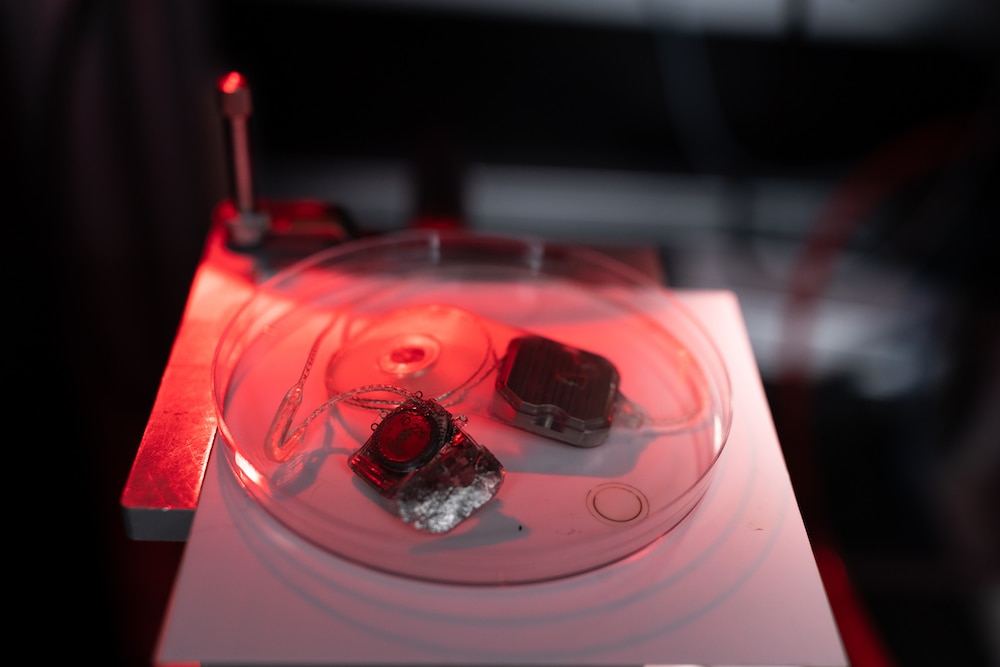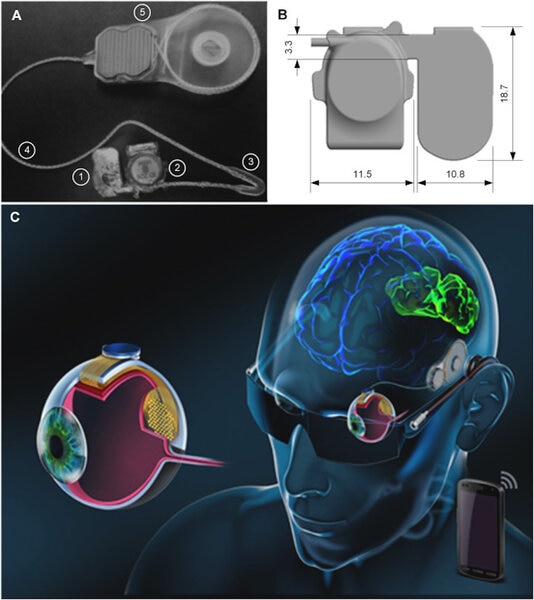Create a free profile to get unlimited access to exclusive videos, sweepstakes, and more!
Sheep with bionic eyes foreshadow human cyborgs
The future looks bright (and woolly)!

Visions of the future often include, funnily enough, futuristic vision. We conjure images of humans engaged in a marriage between biology and technology, making full use of implants for the restoration or enhancement of our senses.
Our cyborg future might remain decades in the distance, but scientists are taking tentative steps toward it in an effort to treat injuries and genetic impairments. The days of commonly used bionic eyes may not be too far off.
Samuel Eggenberger from the School of Biomedical Engineering at the University of Sydney, and colleagues, have developed the Phoenix99, a new implantable device designed to restore vision to individuals with retinal degeneration. Their findings were published in the journal Biomaterials.
In unimpaired vision, light is taken in by photoreceptors which turn that light into electrical signals. From there, those signals are processed and sent to the brain. Certain diseases, such as retinitis pigmentosa and age-related macular degeneration (AMD) damage those photoreceptors, stopping vision at the first checkpoint. The Phoenix99 is designed to bypass that initial step, delivering stimulation to the remaining, intact visual pathway.
“The neighboring cells are sitting right there and waiting for impulses from the photoreceptors so they can send their message down the line,” Eggenberger told SYFY WIRE. “We record with a camera, extract all the information that’s not useful for navigation, simplify the images, and turn that into stimulation patterns.”
Those patterns are then delivered to an electrode array implanted inside the eye and the whole process takes the place of the photoreceptors, though in a reduced form. Users of the Phoenix99, and devices like it, won’t regain the full suite of vision they might once have had, but scientists hope that with some individual tweaking they will achieve a level of vision which is useful for navigating the environment.
Restored vision is commonly thought of as pixelized, similar to unimpaired vision but with lower resolution. Eggenberger stated that’s likely not the case. Instead, individuals might see shapes and shades which come together to create a simple picture.
“I like to do this mental exercise where I close my eyes and try to picture where I am in the room. Then I realize if the device is able to give me even just vertical lines where doors are, or bright spots where windows are, it would already be immensely useful. We’re going from a total absence of vison to something that’s functional,” Eggenberger said.
There are two major constraints when it comes to the resolution these sorts of devices are able to deliver. The first is the relationship between the size of the electrodes and the electrical current they are capable of delivering. In order to stimulate the cells, a certain level of current is needed, and smaller electrodes deliver less of it. In order to achieve higher resolution, we will need to develop smaller electrodes which are simultaneously capable of delivering more current. Large electrodes also have the tendency to trigger activation in multiple neurons at once, some of which may be sending conflicting signals which the brain struggles to interpret. These are challenges we will need to overcome if we want to improve the sorts of sensory information we’re able to artificially deliver to the brain.
The Phoenix99 seeks to get around some of these challenges by being customizable to the individual without the need of additional surgeries.
“We can change the parameters of the device by typing on a computer and tell the electrical charges to be returned to different places. Then we can ask the patient if it’s better, is the image crisper, how does it change?” Eggenberger said.
Before they can get their devices into the hands — or eyes — of people who need them, they needed to show that the surgery was safe and that the body would accept the implant. To that end, the team implanted nine devices into sheep, who served as model organisms. Getting reliable data about visual improvements from animals is a challenge, as they’re not able to vocalize whether or when their vision improves. The focus of these experiments was validating the biocompatibility of the Phoenix99 and improving the surgical process.
“We wanted to look at everything that happens to the sheep after the surgery and then ask questions like: If we add a suture here or make this change, can we improve the surgery and the recovery?” Eggenberger said.
All told, the surgeries were a success. Some minor complications were observed in early test cases, but the team did make the necessary adjustments and ended up with a procedure they believe will work well in humans with minimal impact on the body tissues.
With their prototype and proof-of-concept in hand, the team is poised to begin conversations with ethics committees and regulatory boards about moving to human trials. Though Eggenberger is cautious that trials might be years away, noting there will likely be a back-and-forth before they’ll be ready to take that step.
Once trials are in place, and the team can verify the device works for the restoration of lost vision, it might also be able to supplement vision which is in decline but not totally lost. Because the Phoenix99 resides behind the retina, it could allow for residual vision to remain in place, while taking in sensory information for the areas which have degraded. Moreover, the implant has the potential to deliver novel types of vision outside the normal spectrum.
“All the implant does is stimulate in certain areas as it is instructed to, there’s nothing that would stop us from integrating different types of cameras to capture something like infrared. There’s nothing to stop us from giving night vision. You don’t have to rely on actual incident light, you can look at it from different wavelengths,” Eggenberger said.
All of that, of course, is speculative and much further down the road. Priorities must be taken into account, and we first have to get these devices to those with vision loss who would most benefit from them. Then, later on, the rest of us can get Predator vision.



























